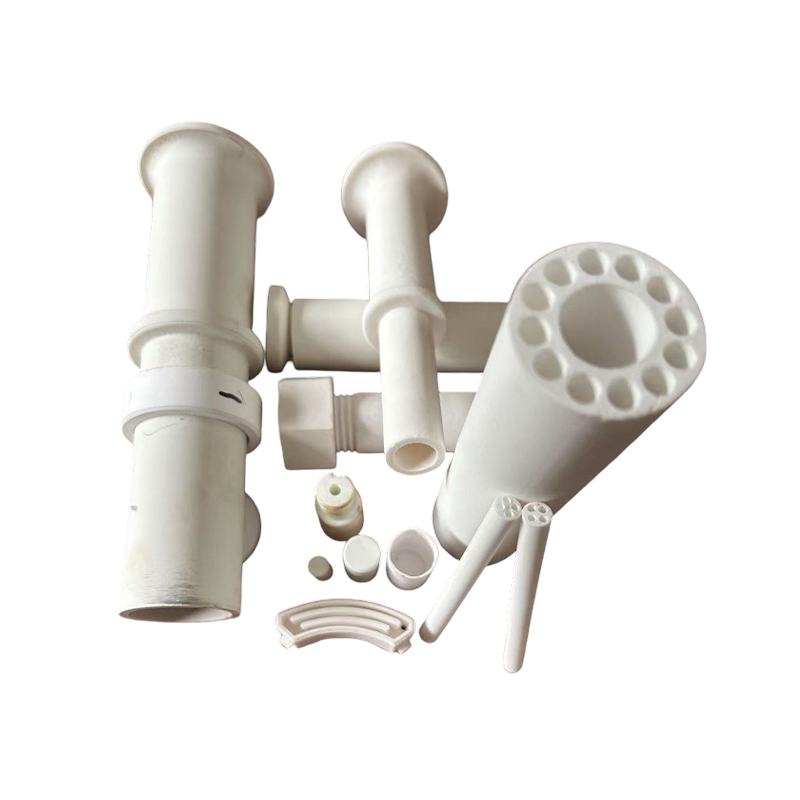What microstructure factors dominate the wear resistance of alumina ceramics?
Release Time : 2025-10-30
The wear resistance of aluminum ceramics is closely related to its microstructure, with grain size, grain boundary characteristics, porosity, glass phase distribution, and phase composition being key factors dominating wear resistance. These microstructural features, by influencing the material's mechanical properties and wear mechanisms, collectively determine the wear resistance of aluminum ceramics in practical applications.
Grain size has a significant impact on the wear resistance of aluminum ceramics. The finer the grains, the higher the material's strength and toughness, because a fine-grained structure more effectively hinders crack propagation. When the grain size decreases, the grain boundary area increases, requiring cracks to cross more grain boundaries during propagation, thus consuming more energy and reducing the risk of fracture. This characteristic makes fine-grained aluminum ceramics less prone to brittle fracture during wear, significantly improving wear resistance.
Grain boundary characteristics are another important factor affecting the wear resistance of aluminum ceramics. As the bonding region between grains, the strength and stability of grain boundaries directly affect the overall performance of the material. The presence of impurities or defects at grain boundaries, such as aggregated second-phase particles or vacancies, weakens the grain boundaries, becoming the starting point for crack initiation.
Conversely, pure and well-bonded grain boundaries effectively transfer stress and inhibit crack propagation. Optimizing the sintering process, such as using isostatic pressing and low-temperature rapid sintering, can reduce grain boundary defects, increase grain boundary strength, and thus enhance wear resistance.
Porosity has a dual impact on the wear resistance of aluminum ceramics. Low porosity helps increase the material's density, reducing stress concentration points during wear and thus lowering the wear rate. However, when porosity is too low, the material may be prone to cracking due to insufficient elastic cushioning. Studies show that porosity has little impact on wear resistance within a certain range; however, exceeding this range, especially when porosity is too high, significantly increases the wear rate. Therefore, controlling porosity within a reasonable range is key to optimizing wear resistance.
The distribution of the glassy phase is also an important factor affecting the wear resistance of aluminum ceramics. The glassy phase, as an amorphous region at grain boundaries or within grains, directly affects the hardness and toughness of materials through its content and distribution. An appropriate amount of glassy phase can fill grain boundary voids, increasing material density; however, excessive glassy phase reduces the material's hardness and wear resistance because it is relatively soft and easily worn. By adjusting the type and amount of sintering aids, the distribution of the glassy phase can be optimized, achieving a balance between hardness and toughness.
Phase composition plays a decisive role in the wear resistance of aluminum ceramics. Alumina ceramics may contain multiple phases, such as α-Al₂O₃ and θ-Al₂O₃, among which the α-phase is the most stable crystal form, possessing the highest hardness and wear resistance. The presence of other phases or impurities, such as unreacted raw material particles or a second phase, will reduce the overall performance of the material. By precisely controlling the purity of raw materials and the sintering process, a high content of the α-phase can be ensured, thereby improving wear resistance.
The wear resistance of aluminum ceramics is also affected by the uniformity of its microstructure. If there is inhomogeneity in the composition or structure of a material, such as localized coarse grains or pore aggregation, it will lead to uneven stress distribution during the wear process, accelerating localized wear. Therefore, by optimizing the particle size distribution of raw materials, the forming process, and the sintering regime, the microstructure can be made more uniform, thereby improving the overall wear resistance.







